I don’t know about you, but my professional life has been filled with discussions on AI generated text and art. The release of and growing proliferation of AI generated and assisted work has people asking many questions about originality, copyright, ethics, plagiarism, and more. I am discussing none of that here.
Instead, I decided to play with one of the AI art generators – an artificial intelligence program trained to create artwork based on a text prompt by synthesizing or learning from a collection of ‘training material’ gathered from various sources. Taking inspiration from one of my most popular posts to date, I wondered if Dall-E could give me a rendition of Spirited Horses that would’ve been compelling in similarity to Henri LeRoy’s had it been a contemporary of that work.
That most popular post is “Chromolithography and the Mystery of Henri and Anita LeRoy,” wherein I attempted to figure out the true authorship of a picture that I inherited from my grandmother, finding out all about chromolithography along the way. If you need a reminder, the first picture in the following gallery is what is often called ‘Spirited Horses’ with the signature of LeRoy. From what I was able to find out, the following two may have been issued as some kind of collect-all-three deal. The final picture is pretty darn similar in my opinion, issued by another chromolithographic company, Prang Co.
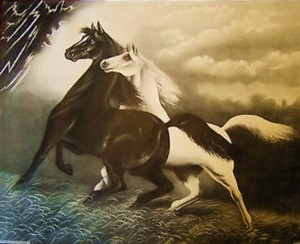
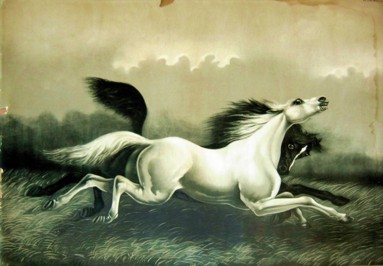
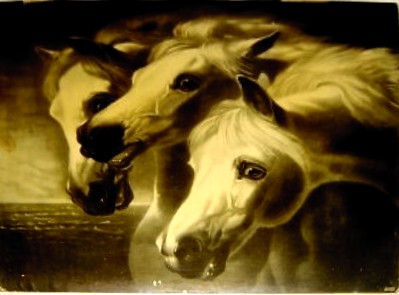
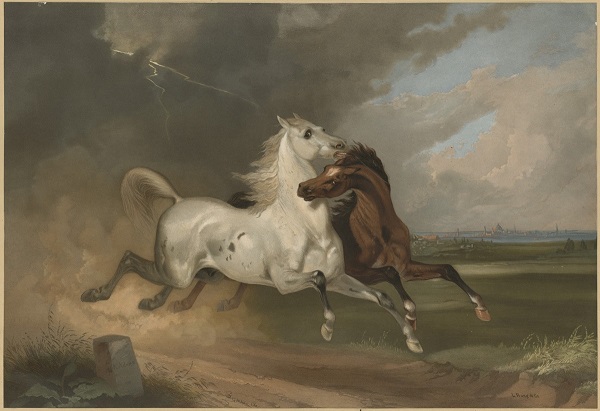
Well, I tried a couple prompts with Dall-E. The first try: “spirited horses in the style of a Victorian chromolithography,” said to me that the AI didn’t really know what I meant by chromolithographic style. Chromolithography was more a technique, but as a technique rooted very firmly to one main time period, I think they did have a look about them. A look that these four results did not capture.
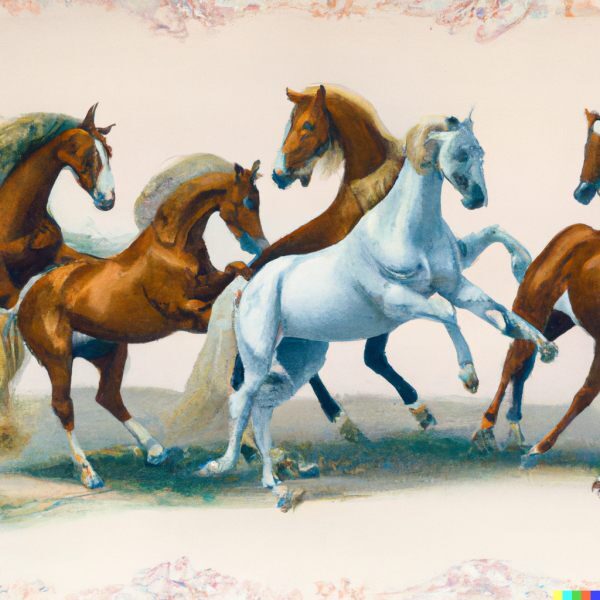
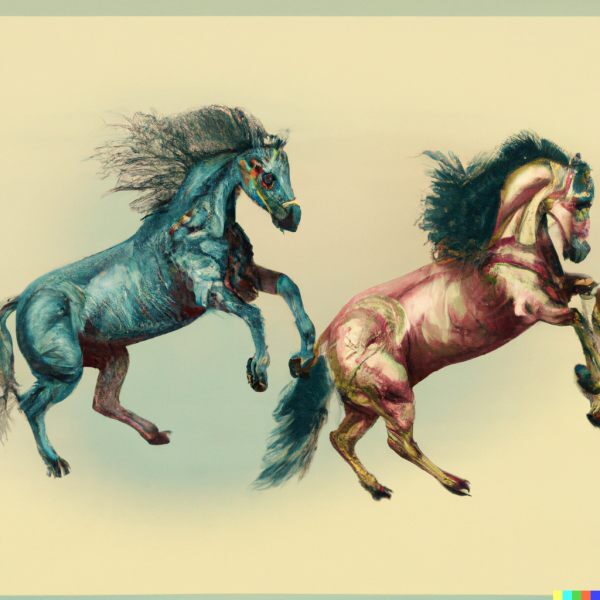
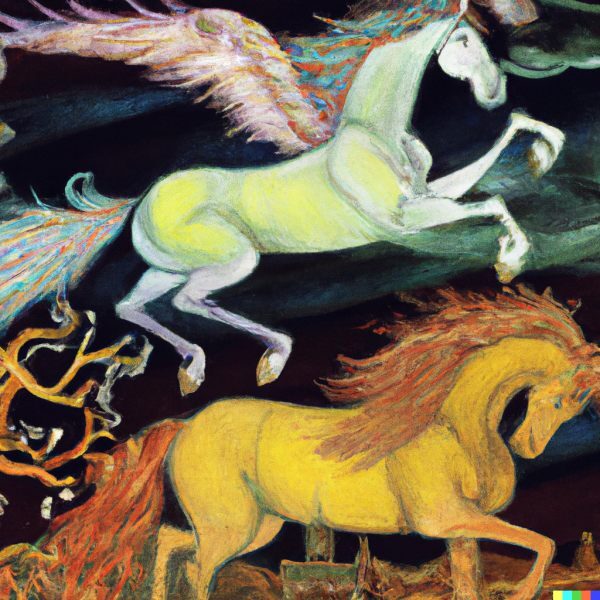
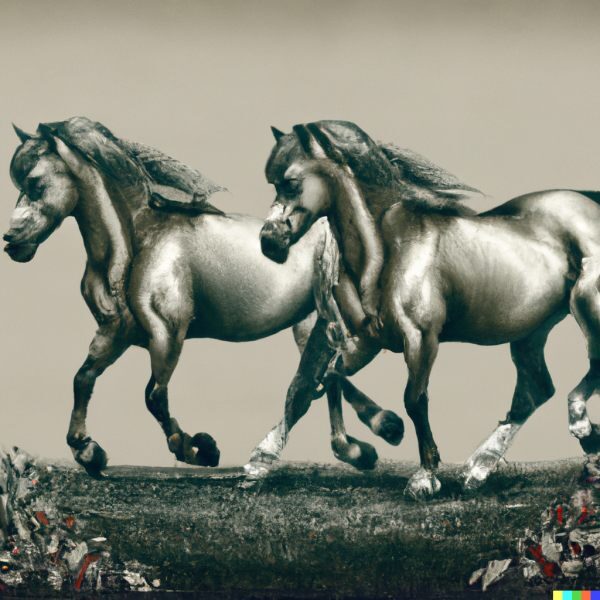
I picked the last one, the one I thought most like my ‘Spirited horses’ and had the AI generate a few variations. The variations went to weird places.
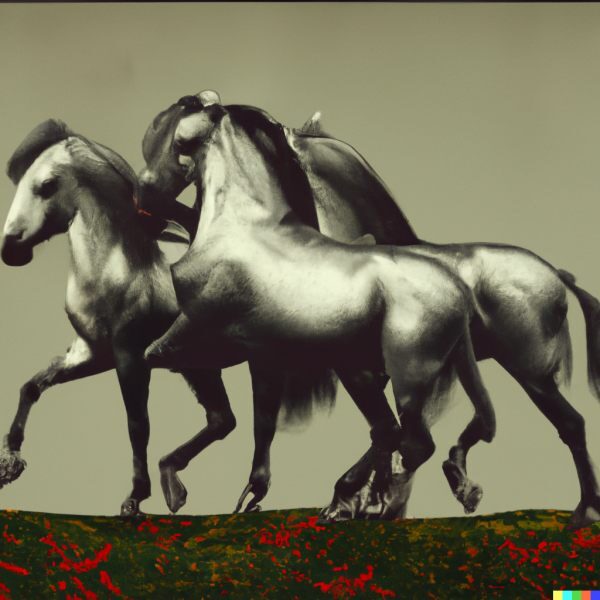
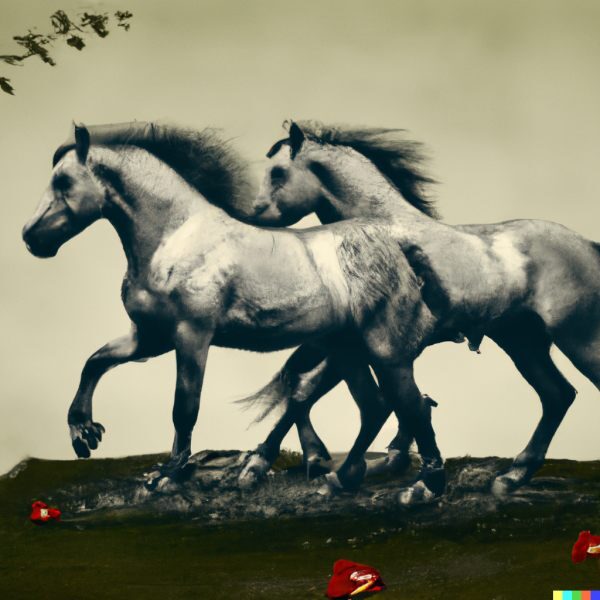
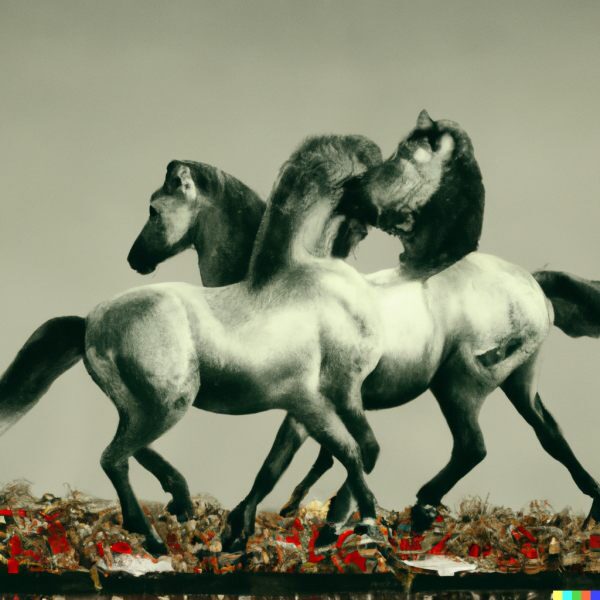
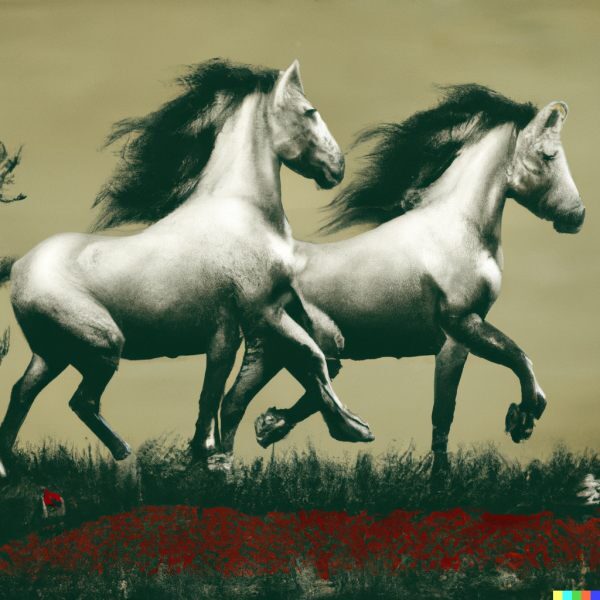
For my next prompt I kept with the chromolithography word and tried: “chromolithography of horses running from a storm.” A couple of the examples here reminded me of the Prang, Co. image.
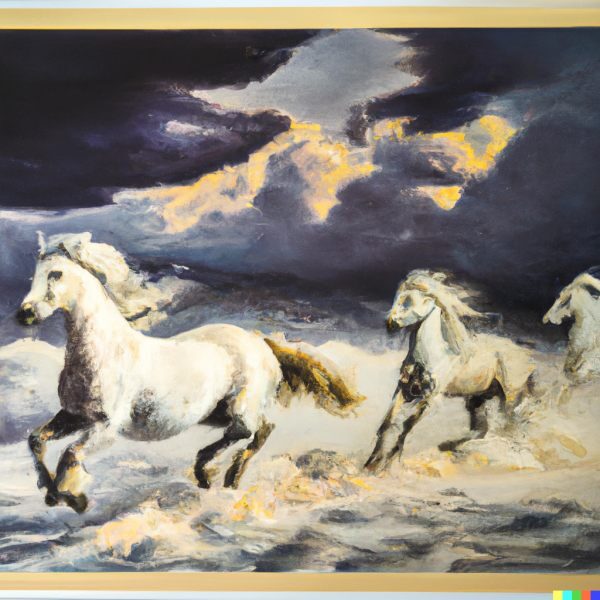
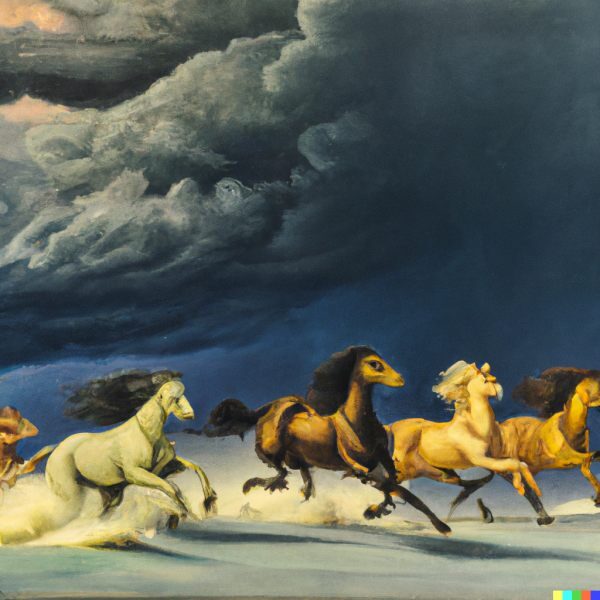
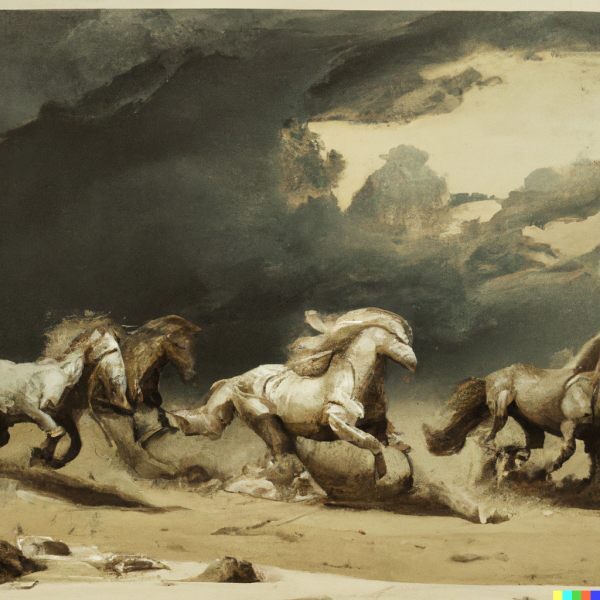
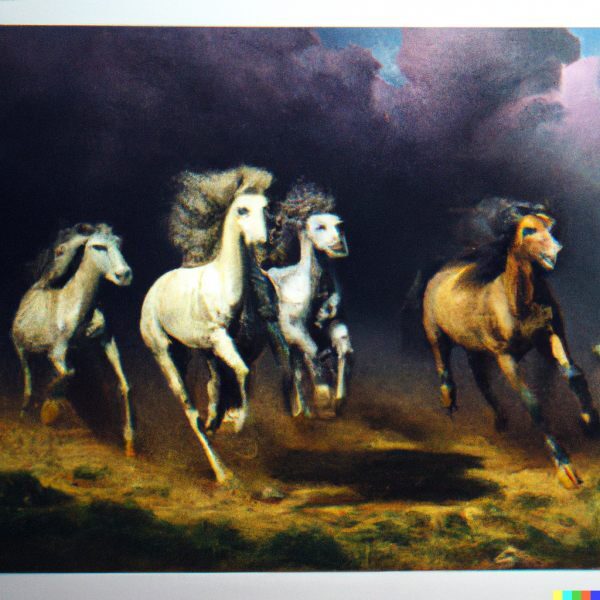
So I tried variations on the last one again.
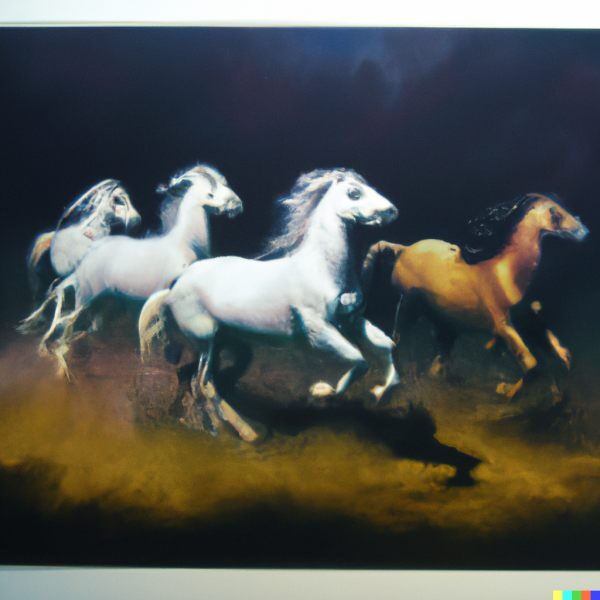
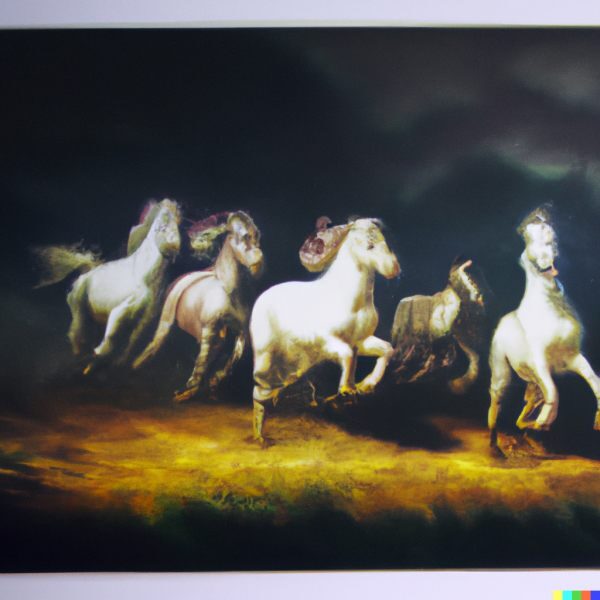
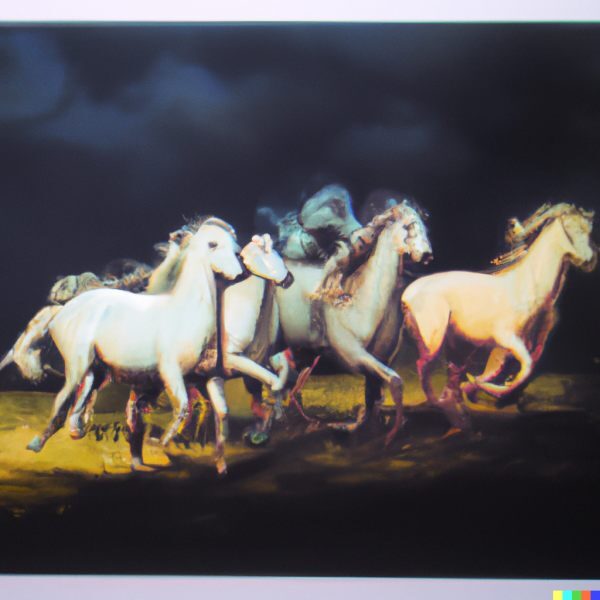
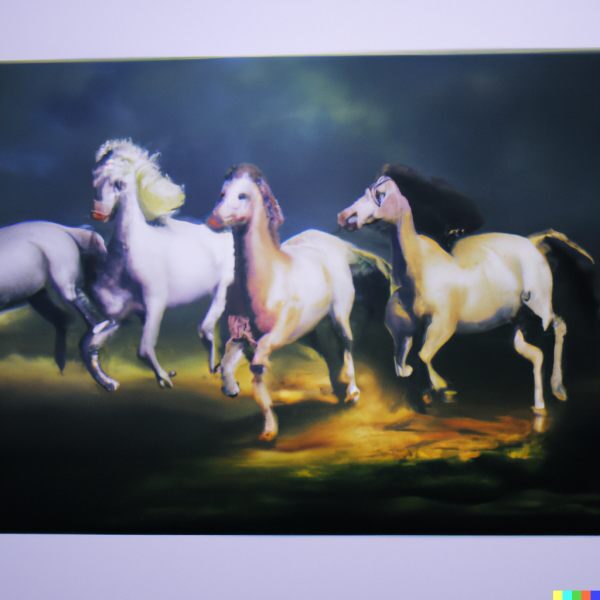
Overall the experiment was interesting. I can see that the text prompt I give is of supreme importance. So, I tried ‘painting of two horses, one black and one white, with the black horse in the foreground, running from lightning.’ The results were different than the two previous tests but not any more ground breakingly similar to the chromolithographic prints I had studied previously.
Was I trying to get something that looked like an existing picture? Maybe. I’m not sure really. Knowing that the AI is trained on existing images from other artists has led many to worry that the images that result are copies, infringing on other artists rights. Of course each art AI I have played with is obviously trained on different images. If Henri LeRoy’s original Spirited Horses was in the training set, would I have gotten a more similar result from the AI? My playing around isn’t really meant to answer those questions. There are researchers trying to do this exactly: get a generated image that obviously infringes on one of its training images.
